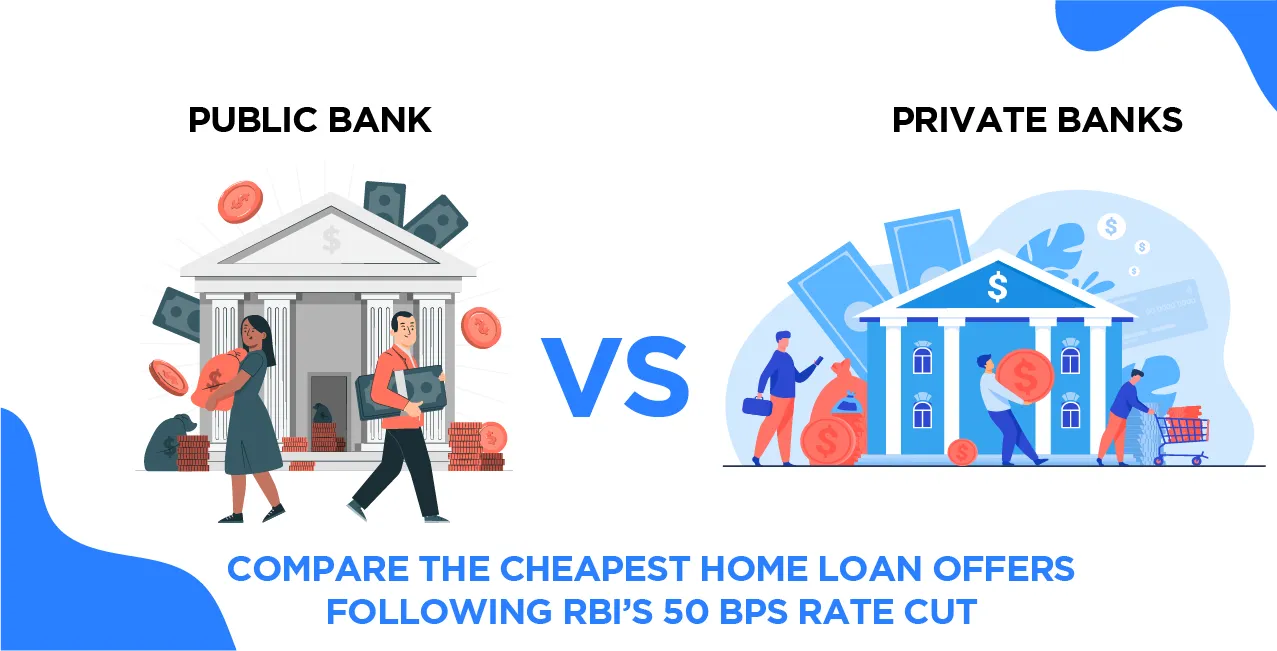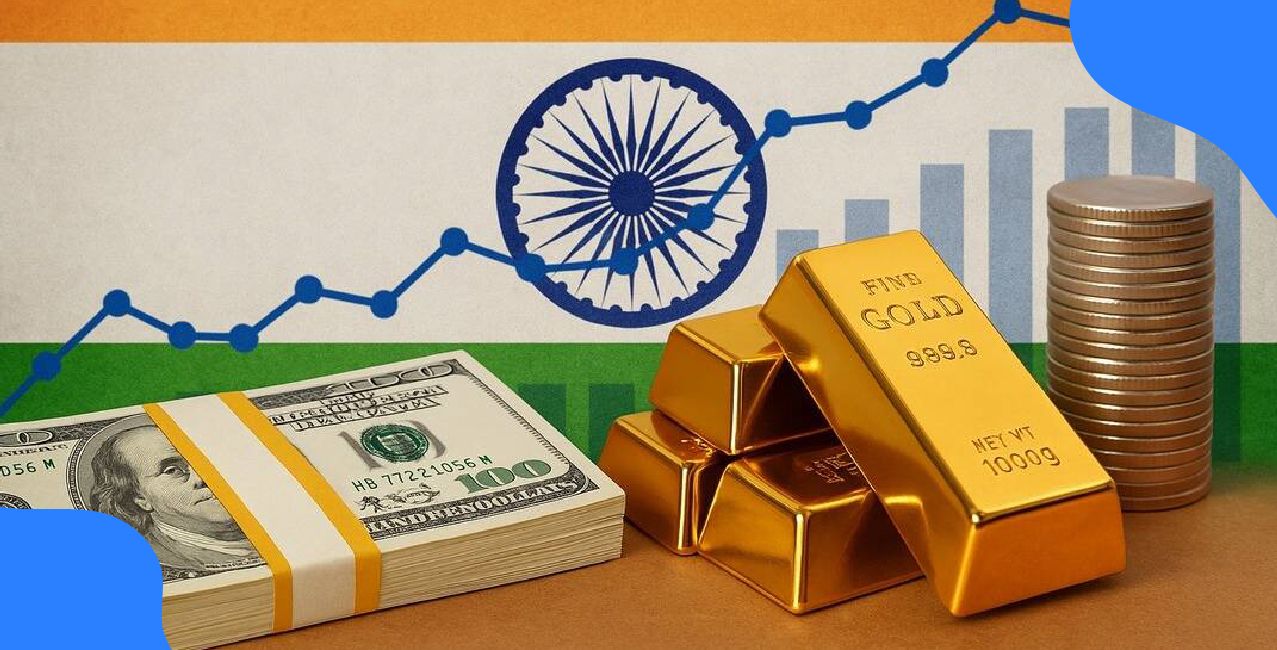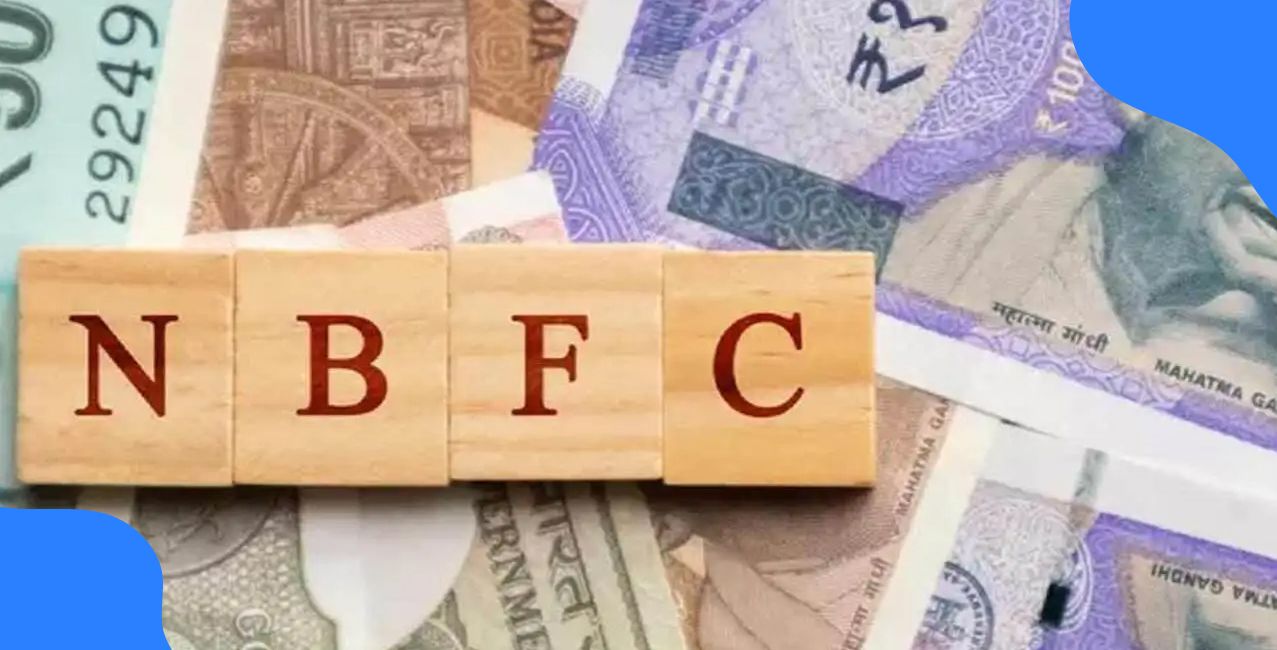
Author
LoansJagat Team
Read Time
4 Min
16 Jun 2025
Public vs Private Banks: Compare the Cheapest Home Loan Offers Following RBI’s 50 bps Rate Cut
Before reading this article, pick up your smartphone and check the following:
- Current Interest Rate: If you have an outstanding loan, then you must know the running interest rate, up to 2 digits after the decimal. Do you know why? Because this is what banks want you to forget.
- Reset Date: Ask your banks when the cut in the interest rates reflect in your loan? If your loan is based on EBLR or RLLR, then it won’t take long for the bank to cut the interest rate on your home loan. However, in the case of MCLR, you might have to wait for 2-3 months.
- Refinancing: If you are not satisfied with the rate cut that your bank offered on your home loan, then just refinance your home loan with some other bank with a lower interest rate.
If you are confused which bank offers the lowest interest rate on home loans, then scroll down and find a detailed table with interest rate comparisons.
The RBI Has Cut the Repo Rate by 100 bps Since February 2025
The table below shows how cumulative repo rate cuts by RBI have translated into EMI savings for borrowers with a ₹30 lakh home loan over 3 years.
Read More – Why Private Banks Are Raising Lending Charges
Date | Repo Rate Cut | Cumulative Cut | EMI Before Cut | EMI After Cut | Monthly Saving (versus Feb) |
Feb ’25 | –25 bps | –25 bps | ₹9,735 | ₹9,522 | – |
Apr ’25 | –25 bps | –50 bps | ₹9,522 | ₹9,309 | ₹226 |
Jun ’25 | –50 bps | –100 bps | ₹9,309 | ₹8,864 | ₹445 |
So, in the best case scenario you can save ₹445 per month, which is ₹ 1,06,800.
Banks Have Cut Down Interest Rates on Home Loans
To carry forward the benefit of repo rate cuts to the account holders, private and public sector banks have now pulled down their lending rates, recently.
With some banks already reducing their rates, you could potentially save up to ₹10 lakh over your loan tenure just by understanding where and how this change affects you.
Here’s how public and private sector banks adjusted their lending benchmarks after RBI's June repo rate cut:
Public Sector Banks
Bank | Benchmark | New Rate (Post‑June) |
Punjab National Bank (PNB) | RLLR | 8.35 % |
Bank of Baroda (BoB) | RLLR | 8.15 % |
Bank of India (BOI) | RLLR | 8.85 % |
Indian Bank | RLLR | 8.70 % |
Canara Bank | RLLR | 7.80 %–8.15 % |
Union Bank | RLLR | 7.85 %–8.15 % |
Bank of Maharashtra | RLLR | 7.85 %–8.80 % |
Private Sector Banks
Bank | Benchmark | Approx. New Rate Post‑June |
SBI (public but large) | EBLR / EBR | 7.50–8.45 % (EBR now 8.15 %) |
ICICI Bank | EBLR | 8.75 % |
HDFC Bank | MCLR | 8.50 % |
Axis / Kotak / IDBI Bank | EBLR/MCLR | 8.00–8.75 % |
Why Public Sector Banks Charge Less on Home Loans?
Do you know why cafeterias of private schools charge so much even for a single samosa, while the entire mid-day meal is for free in a government school?
The same logic applies when looking at interest rates of private banks and public banks. Private banks base the interest of most of the loans on MCLR, which is more profit oriented, however public sector banks base their loans on RLLR or EBLR, to offer better and quick relaxations to its loan borrowers.
Understand this with the help of this table:
Reason | Public Sector Banks | Private Sector Banks |
Cost of Funds | Lower (high savings deposits) | Slightly higher |
Policy Mandate | Broader priority lending | Profit-driven |
Spread over benchmark | Often narrower | Usually wider |
Regulatory & Govt incentives | Access to stimulus push | Less direct access |
Market Competition | High, targeting mass borrowers | Segment-specific |
Public banks benefit from lower deposit costs, government directives to prioritize housing, and tighter spreads—making them more responsive to rate cuts.
Also Read - 2025 Home Loan Interest Rate Comparison
On What Rate Should You Base Your Loan?
Let’s analyse the effect of a 50 bps repo cut on a ₹1 crore loan for 20 years, comparing EMI impact across MCLR, EBLR, and RLLR-linked loans:
Loan Type | Before Rate Cut | After Rate Cut | EMI Before (₹) | EMI After (₹) | Difference (₹/month) | Total Interest Saved Over Tenure (₹) |
MCLR-based | 8.55% | 8.35% | 87,254 | 85,902 | 1,352 | 3,24,480 |
EBLR-based | 9.25% | 8.75% | 91,816 | 88,402 | 3,414 | 8,19,360 |
RLLR-based | 9.10% | 8.60% | 90,366 | 86,867 | 3,499 | 8,39,760 |
Conclusion: RLLR and EBLR-based loans show faster and more substantial transmission of repo rate changes than MCLR-based ones. However, borrowers should also factor in frequency of revision, tenure flexibility, and prepayment conditions.
Conclusion
RBI’s 50 bps cut in June—bringing the total to 100 bps this year—has significantly eased borrowing costs. A common ₹30 lakh loan now saves around ₹445 in EMI compared to February.
Public sector banks often pass on these benefits faster and with slimmer margins. Yet, top private banks like SBI, ICICI, and HDFC remain competitive, especially for borrowers with excellent credit.
What you should do now:
- Check if your home loan is linked to an external benchmark (repo rate, EBLR, MCLR).
- Watch your next reset date to see if your bank passes the cut fully.
- Explore refinancing if your rate is significantly above current benchmarks.
- Compare processing fees and tenure trade-offs before switching lenders.
If you share your current interest rate, reset date, and bank, I can help you drill down on your potential savings and next steps!
About the Author

LoansJagat Team
‘Simplify Finance for Everyone.’ This is the common goal of our team, as we try to explain any topic with relatable examples. From personal to business finance, managing EMIs to becoming debt-free, we do extensive research on each and every parameter, so you don’t have to. Scroll up and have a look at what 15+ years of experience in the BFSI sector looks like.

Quick Apply Loan
Subscribe Now
Related Blog Post

LoansJagat Team • 11 Dec 2025

LoansJagat Team • 11 Dec 2025

LoansJagat Team • 12 Dec 2025